You are here
HAD News Number 77 - October 2010
Osterbrock Award to Sivin
Sara Schechner, Harvard University
Chair, HAD Prize Committee
The Donald E. Osterbrock Book Prize of the Historical Astronomy Division is a new biennial award that recognizes the author(s) of the book judged to best advance the field of the history of astronomy or to bring history of astronomy to light. The first prize will be awarded in 2011 to Nathan Sivin for Granting the Seasons: The Chinese Astronomical Reform of 1280, With a Study of Its Many Dimensions and an Annotated Translation of Its Records (New York: Springer, 2009). Sivin is Professor of Chinese Culture and of the History of Science, Emeritus, at the University of Pennsylvania.
Based on forty years of research, the book offers readers a nuanced and intricate exploration of what is considered to be the most important and sophisticated Chinese astronomical treatise, the "Season Granting System [shou shi li]." This treatise contained a new set of methods for generating annual almanacs. It took its name from the ritual of the emperor officially promulgating these almanacs and bestowing the seasons on the people each year as an official act of maintaining harmony between the cosmos and the state.
The "Season Granting System" dates from the early years of Mongol rule over China. Khubilai Khan used the ambitious astronomical reform project as a symbolic means to inaugurate the Yuan Dynasty (1276-1368) and more critically to legitimize Mongol rule over the conquered Chinese.
In the first half of the book, Sivin delves deeply into the cultural, political, bureaucratic, personal, and technical aspects of the astronomical project. "I aim," Sivin says, "to portray the technical methods of astronomy as part of a continuum that enfolds every dimension of human activity, from algorithms to political maneuvering." To this end, he examines the reform from the vantage points of Chinese astronomers and mathematicians, monks and political advisors, timekeepers and students, editors and printers, and "civil-service generalists." Sivin explores how and why Khubilai Khan invested unprecedented resources in astronomy at the urging of his Chinese advisors. He describes the Chinese methods of computation and observation, the layout of the observatory and the development of new instruments, the nature of ancient astronomical records, and the previous history of astronomical reforms in China. Along the way, Sivin offers comparisons with contemporary European and Muslim astronomical work and considers whether there were exchanges between Islamic and Chinese astronomers.
In the second half of the book, Sivin translates and offers technical commentary on the "Season Granting System." The text contains instructions in new mathematical methods and the use of instruments, which Sivin carefully lays before the reader. The "Season Granting System" also contains a long "evaluation" section describing in detail the astronomical and mathematical methods endorsed by prior astronomical reforms. This section preserves over 1000 years of astronomical thought and activity, and Sivin's translation makes this history accessible to a wide audience.
Sivin's work is a monumental weaving of many historical threads and a study of the social and scientific fabric they create. This book will be a standard reference on Chinese astronomy and a starting point for many further studies in astronomy, society, and history. Sivin, moreover, throws down a gauntlet to Western and Eurocentric scholars urging them to pay more attention to Indian, Muslim, Asian, and other non-European traditions in astronomy and consider their role in the formulation of Western modern science.
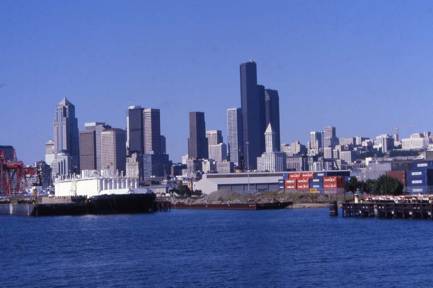
On to Seattle!
Joseph S. Tenn, Sonoma State University
The 2011 HAD meeting in Seattle promises to be an exciting one, starting with the two special sessions on Sunday, 9 January. The first, from 12:30–3:40 p.m., will be on "The Astronomical Contributions of the Herschel Family." Organizer Woody Sullivan has lined up speakers Emily Winterburn (Imperial College, London), Robert W. Smith (University of Alberta), David DeVorkin (Smithsonian Institution), Marvin Bolt (Adler Planetarium), Woodruff T. Sullivan III (University of Washington), Clifford Cunningham (James Cook University, with coauthors Brian G. Marsden and Wayne Orchiston), and Thomas Hankins (University of Washington). According to the organizer,
This session will investigate the many major contributions to astronomy made by the family of William Herschel, his sister Caroline, his son John, and others over the period 1780–1850. Many historians have rated William as one of the handful of greatest observers of all time, but he was also revolutionary in how he interpreted his observations of the solar system, binary stars, stellar clusters, and nebulae. He discovered the planet Uranus, invented the whole notion of evolution ("maturation") of nebulae and clusters from one type to another, made the first quantitative map of the Milky Way as part of his "construction of the heavens," and first detected infrared radiation. And on top of all that, he advanced the technology of reflecting telescopes far beyond that of his peers. His sister Caroline was vital for almost all of William’s observational work, data reduction, and catalog compilation. On her own she also discovered many comets and won one of the earliest Gold Medals of the Royal Astronomical Society. Finally, William's son John extended his father's sky survey to the Southern Hemisphere and developed the mathematics for turning observational data into binary star orbits. Other Herschels will also be discussed.
The second session, from 4:00-6:00 p.m., will be on "Neptune after One Orbit: Reflections on the Discovery of a Planet." Craig Waff and Bill Sheehan have organized the session with presentations by Robert W. Smith (University of Alberta), Brian Sheen (Roseland Observatory, England), William Sheehan (Independent Scholar), Craig B. Waff (Air Force Research Laboratory), Deborah A. Kent (Hillsdale College), and Greg Laughlin (University of California, Santa Cruz, with coauthor Mike Brown, California Institute of Technology).

Cartoon published in France showing Adams looking in vain for the planet and then finding it in the pages of Leverrier's book.
This session is described:
The year 2011 marks not only the 200th anniversary of the French mathematical astronomer Urbain Le Verrier's birth, but also the first return of Neptune to its optical-discovery position in 1846. Despite the passage of more than 164 years since that planet discovery, the circumstances surrounding the near-simultaneous mathematical predictions of a transuranian disturbing planet made by Le Verrier and John Couch Adams, a young Fellow in St. John's College at the University of Cambridge, and the subsequent optical discovery of Neptune by German astronomer Johann Gottfried Galle at the Berlin Observatory continue to remain controversial. The double anniversary occurring in 2011 is an appropriate time to examine the Neptune discovery event from a number of new perspectives. In this session we shall explore how Cornwall shaped Adams' early education and his method of locating the presence of a hypothetical disturbing planet. We shall examine the possibility that Adams (and perhaps Le Verrier as well) may have had Asperger's Syndrome (high-functioning autism), a condition that may explain their difficulties in communicating and interacting with their contemporaries. The intense French press attack on British astronomers immediately after the discovery is examined in detail for the first time. The role that Benjamin Peirce's analysis of Neptune's actual orbit (which differed greatly from those hypothesized by Adams and Le Verrier) played in the development and European perception of American astronomy and mathematics will be discussed. We open and close the session with presentations placing the Neptune discovery event within the context of 19th-century science and relating it to modern-day searches for planets in the outskirts of the solar system and around other stars.
Monday will be another big day for HAD. At least twelve poster papers will be on display all day, most of them from Wayne Orchiston's history of astronomy group at James Cook University in Australia. The morning oral session (10:00-11:30) will consist of six contributed papers, while the afternoon one (2:00-3:30) will include three, followed by the presentation of HAD's first Donald E. Osterbrock Book Prize to Nathan Sivin for Granting the Seasons and Professor Sivin's invited lecture on "Astronomy with a Difference: China." In between will be the annual HAD Business Meeting, where all members can express their views. Among the topics to be discussed will be special sessions for the next meeting-session organizers are needed-and the question of whether HAD should hold more of its meetings separate from the AAS. And the evening will see HAD's fourth annual minibanquet. More information will be sent via e-mail. There will be more oral contributed papers Tuesday morning.
Full abstracts of all HAD papers will appear soon on the HAD website at had.aas.org/. Just go to "Meetings with Links to Abstracts" and then to 2011.
New Officers to Take Over
Joseph S. Tenn, Sonoma State University
The annual HAD Business Meeting will end, as it does in every odd-numbered year, with the ceremonial changing of the guard. Thomas Hockey will turn over the gavel and the "Ich bin HAD" plaque to new Chair Jarita Holbrook. Tom will then become Past Chair and thus Chair of the HAD Prize Committee. The Prize Committee now has tasks to do every year, selecting the recipient of HAD's highest honor, the LeRoy E. Doggett Prize for Historical Astronomy, and the Donald E. Osterbrock Book Prize for Historical Astronomy in alternate years.
The three winners of the recent election will also assume office: Jay Pasachoff (pictured above) will become Vice Chair/Chair Elect, which will put him in charge of soliciting and editing obituaries of all newly-deceased AAS members for the next two years. Richard Jarrell and Wayne "Ozzie" Osborne will join the HAD Committee.
Jay Pasachoff"s response to his election was, "I am very pleased to have a chance to help the AAS's Historical Astronomy Division continue to do interesting things, including not only our meeting symposia but also visits to rare-book collections and other activities, as well as expanding our outreach as much as possible."
Thanks to those who have served their terms: Sara Schechner, who will complete six years of service as Vice Chair, Chair, and Past Chair, and Kevin Krisciunas and Jim Lattis, who have served the past two years on the HAD Committee.
The other bit of election news is that the membership overwhelmingly ratified the updating of the bylaws. The new version is on the website.
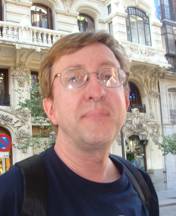
From the Chair
Thomas Hockey, University of Northern Iowa
Some of you have asked, "Where are the obituaries?" The American Astronomical Society reaffirms its commitment to publishing obituaries. Even though the Bulletin of the American Astronomical Society [BAAS] is on hiatus as a print publication, the obituaries that once appeared there will be "published" electronically in a manner to be directed by the AAS Publications Board. This will take place beginning in 2011.
There still will be a mechanism for those who wish a printed version to obtain one. AAS obituaries will continue to receive Digital Object Identifiers (stable links to digital documents) so that they may be found via web searches. They will also continue to be accessible from the Astrophysics Data System [ADS] and also from the list available on the HAD website. They will be archived. If you are used to reading digitized versions of the obituaries already, the major difference you will notice will be the absence of a BAAS volume number in the citation. Higher quality portraits — in color — will also be an improvement.
The HAD takes its obituaries mandate seriously. Most importantly, there will be no coverage "gap" due to these changes. We will continue toward our nearly-reached target of editing an obituary for every deceased member of the AAS.
From the Vice Chair
Jarita Holbrook, University of Arizona
It has been a pleasure to serve as vice-chair to Thomas Hockey. Tom's laid back style makes him easy to work with, yet, underneath, he had things that he wanted to achieve during his chairmanship and agendas to put forward. Tom created the Cultural Astronomy Summer School (CASS) for the International Year of Astronomy 2009 as part of the summer pre-meeting. Better yet, it was attended by graduate students, postdocs, educators, and filmmakers. CASS broadened their astronomy training to include both historical and indigenous astronomy. The comments by the participants were very positive, and they recommended that CASS be a regular feature of AAS meetings. Perhaps Tom will take up the challenge to make it a bi-annual if not an annual event. Tom thought deeply about how to marry HAD to cultural astronomy, a topic that Steve McCluskey considered many years ago. However, such a marriage will have to wait for another chair. Thank you, Tom, for your two years of service.
Being Vice-Chair has been much more important than I expected. My responsibility as AAS obituary editor made me often the first person to know about the passing of members. Further, I learned much about our members as I read and edited their obituaries. My focus was on how each was a good mentor and a good leader, most were definitely solid-to-brilliant astronomers. I wanted to learn how they advanced the field of astronomy through their activities other than just scientific research. I learned a lot. The saddest part of being Vice-Chair was not when people who agreed to write obituaries did not turn them in; it was when I could not find an author for one of our members.
So far this year we have produced eighteen obituaries, with five more promised but not yet delivered. We are still seeking individuals to write them for Joseph Zelle, Kenneth L. Cashdollar, Julius Cahn, David S. Peregrine, Darrell Hoff, and Robert F. Doolittle II. If you would like to write one of these, please contact me, or after the January meeting, Jay Pasachoff.
In January, I assume the Chair of HAD. My goal is to move forward those goals set by the HAD membership. Many of my goals for HAD were met under Tom’s leadership, including the establishment of a student travel award, which leaves me very pleased and quite open to suggestion. I will rack my brain for other ways to bring young people into our organization so that it will grow and venture into innovative ways of studying the history of astronomy.

From the Secretary-Treasurer
Joseph S. Tenn, Sonoma State University
I have been retired from teaching for 16 months now, and I miss giving quizzes, so I have decided to give you one.
What could I quiz HAD members on? You are extremely knowledgeable about the history of astronomy, and practically any factual question can be answered in minutes with an Internet search — as Woody Sullivan found out a few years ago when he tried asking some in HAD News.
I have decided to quiz you on historical astronomy papers presented to HAD. Yes, I found all the answers on the Internet (starting at had.aas.org/meetings/), but it took me quite a few hours, something most of you are unlikely to want to invest. (Did I mention that I am retired?) I went back through the records and compiled a list of all those who have presented history papers since HAD's first meeting in 1981. I am not sure what to do with this list, but I could put it on the HAD website along with the abstracts if there is any interest.
A few explanations first: I included all history papers presented to the AAS, including a few that were not in HAD sessions. An example is the one history paper presented at the June 2009 AAS meeting in Pasadena. I excluded some non-historical papers presented in what were nominally HAD sessions. In the early years especially, there was a tendency to put education papers in the same session with historical papers.
One striking observation: HAD once had lots of archaeoastronomy papers; now it has very few. Has the subject died out, or have its devotees decided to present their findings elsewhere? I suspect the latter, and I have heard that some are choosing a meeting in Peru over Seattle this January.
Another question that arises is classification. I made no attempt to classify the papers (something David DeVorkin did when he compiled a list in HAD News #44 in 1998. He divided them into Archaeoastronomy, Classical, Modern, Applied, Miscellaneous, AAS Invited, and Public. If you submit an abstract today, the AAS asks you to classify it into one of four categories: History — AAS, History — Modern, History — Ancient, or History — Other. Should we add Archaeoastronomy and Medieval? or just have a single "History" category? I was recently trying to decide whether a paper dealing with 10th century astronomy should be considered ancient or modern. I ended up choosing "other.". Please send me your comments on this.
Now for the quiz. Answers are at the end.
1. How many different individuals presented historical astronomy papers from 1981 through 2010? Any answer within 50 will get full marks.
2. How many individuals presented 15 or more papers? For extra credit, name them.
3. Longevity award: Who presented at least one paper during the first two years (1981, 1982) and also in the last two (2009, 2010).
4. What was the largest number of historical papers ever presented in one meeting? Which meeting?

HAD VP Featured by ASP
HAD Vice President Jarita Holbrook was featured in the Astronomical Society of the Pacific's "Astronomy Beat" in July. In the article, Jarita describes her evolution from astrophysicist (Ph.D., University of California, Santa Cruz, with a dissertation on single versus cluster star formation) to anthropologist studying the role of astronomy in African culture and bringing it to a wider audience.
Jarita has done field work in Africa; in fact she is there this fall, teaching at South African universities and learning about the astronomy-related beliefs of several African cultures. For the ASP she described how she got into this work and the conference she co-organized in Ghana in 2006 at the time of a solar eclipse. The proceedings became a book, African Cultural Astronomy (New York: Springer, 2008), which she co-edited with African colleagues R. Thebe Medupe (pictured above with Jarita) and Johnson O. Urama.
I am sure we will hear more about cultural astronomy during the next two years as Jarita assumes the chair of HAD.
Call for Nominations for the 2012
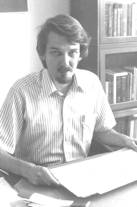
LEROY E. DOGGETT PRIZE FOR HISTORICAL ASTRONOMY
Thomas Hockey, University of Northern Iowa
The Historical Astronomy Division of the American Astronomical Society awards its highest honor, the LeRoy E. Doggett Prize, biennially to an individual who has significantly influenced the field of the history of astronomy by a career-long effort. Any member or affiliate member of HAD may nominate a candidate for the Prize. Nominations must include at least one detailed letter of support and a complete curriculum vitae for the nominee. Supporting letters are welcome.
Deadline for nominations for the next prize cycle will be 15 March 2011. Nominations roll over for two prize cycles.
Please send supporting materials to the Secretary of the Prize Committee, Joseph S. Tenn. E-mail is preferred.
For further details about the Prize and information about past recipients, please visit http://www.aas.org/had/doggett/.
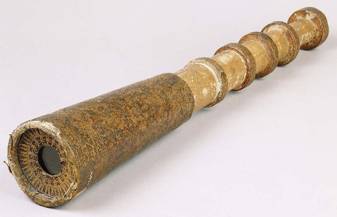
My Reflection on the Telescope's Four Hundredth
Thomas Hockey, University of Northern Iowa
Last year's International Year of Astronomy brought forth a prodigious amount of literature on the telescope and its influence in science, society, and even art. Yet philosophers were oddly absent in recognizing the 400th anniversary of this remarkable instrument. They have not been so in regard to the telescope's cousin, the microscope.
Both the telescope and the microscope have extended human senses and are the basis for many scientific achievements; some of those of the microscope can save our lives. Yet philosophers of an idealist persuasion question the microscope as a conduit to reality. The argument goes something like this: The telescope, at least, shows us objects that we could, in theory, visit and scrutinize at close distance — ;planets and stars. The microscope shows us objects in an inner world that we can never call upon ourselves.
Regardless of what you believe about the microscope, this old special pleading for the telescope I find naïve today. Telescopes now allow us to view far beyond the stars. For example, we can use them to observe distant quasars. Even if we could visit the site of a quasar, it would no longer be a quasar. There might be some other visual creature, at another time and far across the Universe, who could see the quasar without a telescope, much as we do with it. Still, as long as we are fantasizing, we might as well also envision a visual creature so small that it can observe a cell and see it much as we see the cell by using a microscope. Nonetheless, neither creature is us. No, I find the microscope and telescope equivalent in that they both allow us to "visit" places to which we could never travel through space and time.
The "free pass" philosophers have given to the telescope may be historical. Shortly after its invention, Galileo Galilei argued, strongly and publicly, with peers such as Martin Horky, that the view provide by a telescope is that of reality. Johannes Kepler's verification through the use of witnesses, and later his optical theory (though incomplete), soon seemed to "cinch the deal." Terrestrial (and space) travel continue to bear these men out. The telescope eventually was credited with providing key evidence for the acceptance of the Copernican theory. The microscope had no such eloquent champions.
Nevertheless, both instruments require us to view an object through a medium. Certainly we do that routinely. With our naked eye we see things through natural, transparent materials (such as water and air) all the time. But the mirrors and lenses within a telescope or microscope are artificially constructed based upon an optical theory. Of course they work great. That does not stop the philosopher, though. He or she is obligated to ask, "Should it always be so — and why?"
I do not argue for skepticism about the utility of the telescope. Rather, I argue that those who are skeptical of the microscope are obligated to give my cherished telescope equal time. If you accept the telescope as a conduit to truth, must you not also accept the microscope?
The HAD Booth in Seattle
Arnold Heiser, Vanderbilt University
We will again have the HAD information booth in the Exhibition Hall at the Seattle meeting of the AAS. The booth will be "open" from 9:00 a.m. to 6:30 p.m. on Monday, Tuesday, and Wednesday, 10-12 January 2011, and from 9:00 a.m. to noon on Thursday 13 January, except for the times when HAD has oral sessions and when we have our business meeting. We are seeking volunteers to spend one-hour shifts at the booth.
Please let me know those dates and times that you will be able to join us at the HAD booth. Use e-mail or after 1 January call me at 615-438-4290.
For further information see http://www.hao.ucar.edu/EDDY2010/index.php.
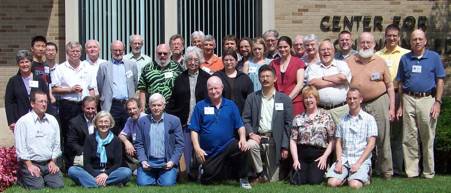
Philosophy of Astronomy at ND X
Matt Dowd, University of Notre Dame
Every two years, a cadre of historians of astronomy converges on the campus of Notre Dame to attend an intimate meeting in a congenial atmosphere. The Tenth Biennial History of Astronomy Workshop will be held on July 6–10, 2011. A full slate of presentations and activities will keep us occupied throughout the meeting, including what has now become a regular feature of the meeting: a day trip to the Adler Planetarium in Chicago. I would like to cordially invite HAD members to participate in the upcoming conference.
At the 2009 meeting, a fascinating session on the philosophy of astronomy kicked off the meeting. The session was organized and chaired by Steve Dick, and included presentations by George Gale, Don Howard, Owen Gingerich, Michael Crowe, and Matt Stanley. The session demonstrated the enormous potential for this new field of study, and attendees of the business meeting that closed the workshop expressed an overwhelmingly positive reaction to extending our investigations. Thus the organizing committee of Marv Bolt, Steve Dick, David DeVorkin, and Matt Dowd has pursued this topic as a theme for the 2011 meeting.
The philosophy of astronomy raises a host of intriguing questions: What is astronomy? What kind of a science is it, and what kind of a science has it been? Is it purely observational or does it seek explanations? What is and what has been the societal role of the astronomer? How are new astronomical objects described and classified? Does astronomy, now and in the past, present peculiar problems of observation-theory interaction? What issues surrounding instruments, which have been so important to the progress of astronomy, can benefit from historical-philosophical inquiry? A number of organized sessions are already in the works to answer these and similar questions. Liba Taub, Director and Curator of the Whipple Museum of the History of Science and Professor of History and Philosophy of Science at the University of Cambridge, will be the invited international speaker and will bring a wealth of knowledge and scholarship to the questions at hand.
The biennial meetings have long been driven by the participants, who bring their research and scholarship before the group, and who provide insightful critique and aid to their colleagues. Because of the small meeting size and the deliberate attempt to provide time for discussion, those who attend these meetings are able to address a friendly audience and receive useful feedback. We thus invite paper and session proposals from all time periods, geographical regions, and methodological approaches that will expand our investigation into the theme of the philosophy of astronomy. We are also open to nontraditional sessions, such as hands-on activities that could be used in classrooms or in public outreach.
Submission guidelines will be available through the conference website at http://www.nd.edu/~histast/ that site will be updated as more information becomes available. Updates are also sent to the HASTRO-L list online. Submissions, as well as other inquiries and more detailed questions, can be sent to me.
First Student Travel Award
As announced last year, HAD now offers an award of $500 to one graduate student to attend and present a paper at each HAD meeting. The first recipient will be Clifford J. Cunningham, a student pursuing a Ph.D. in history of astronomy at James Cook University in Townsville, Australia. He will speak in the special session on the Herschel family contributions, presenting "Who Invented the Word 'Asteroid': William Herschel or Stephen Weston?" His thesis advisors, Brian G. Marsden and Wayne Orchiston, are listed as coauthors.
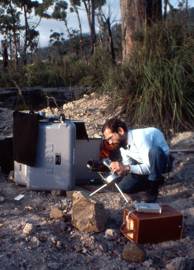
Alan Fiala (1942-2010)
Brenda Corbin, USNO Library
HAD member Alan D. Fiala died on May 26, 2010, in Arlington, Virginia. He suffered respiratory failure after a brief illness. Alan, who was 67, had been a staff astronomer at the U.S. Naval Observatory in Washington, D.C., for his entire professional career. As one of the world's experts on eclipse calculations, he was the lead author of the chapter on eclipse calculations in the 1992 Explanatory Supplement to the Astronomical Almanac, and was also the co-author of Canon of Lunar Eclipses 1500 B.C–A.D. 3000 with Bao-Lin Liu, the foremost Chinese expert. The photo shows him at a 1981 eclipse in southern Tasmania. The full obituary for the AAS has been prepared by George H. Kaplan of the Naval Observatory and will be available online in 2011.
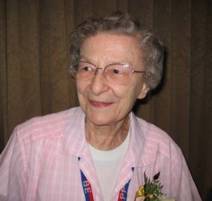
Send a Card to Ruth Freitag
Brenda Corbin, USNO Library
Ruth S. Freitag, a HAD member for many years, has recently suffered health problems and is now residing in a nursing facility in Falls Church, Virginia. Although her condition is improved, she is confined to a wheelchair. As many of you recall, from 1988–2001, Ruth compiled the very valuable lists, "Recent Publications Relating to the History of Astronomy," which appeared as supplements to HAD News. These lists are still available online at https://had.aas.org/bibliographies/. For many years Ruth regularly attended the HAD sessions at the AAS meetings, and was also a regular attendee of the Biennial History of Astronomy Workshops at the University of Notre Dame.
If any of Ruth's colleagues would like to send her a note bringing her up to date on recent history of astronomy activities, she would certainly enjoy hearing from you. Her address is:
Ruth S. Freitag
Powhatan Nursing Home
2100 Powhatan Street
Falls Church, VA 22043-1940.
A recap of Ruth's long career might be of interest to HAD members. She graduated from Penn State in 1944 and enlisted in the Women's Army Corps in June 1945, serving 3 years in China. After military service, she applied for a clerical position in the Foreign Service and was eventually called to Washington for training. She served as a communications specialist at the embassy in London and later Hong Kong. A few years after leaving the Foreign Service, she enrolled in a Master's of Library Science Program at the University of Southern California. After receiving her degree, she came to the Library of Congress in 1959 as one of the six recruits in the intern class of librarians. She later took a position in the Bibliography and Reference Correspondence Section, where she worked for 19 years. Ruth soon became one of the Library's foremost experts in reference work, especially with her encyclopedic knowledge of resources in science and technology. She also held positions in the Office of Bibliography and the Science and Technology Division. She retired in February 2006 after 55 years of federal service.
In an interview in 1990, Ruth noted that "bibliographic work may sound dull at first, but it can really grow on you, to the extent of becoming a vice." She also mentioned "it's true what they say about librarians... whatever you have learned someday you will use, so it pays to be a snapper-upper of unconsidered trifles."
In 1984, the Library of Congress published Ruth's masterful 3,235-entry Halley's Comet: A Bibliography. Ruth was a stickler for accuracy in citations and it is likely there are very few errors in this massive bibliography.
At the January 2006 HAD meeting in Washington, DC, Chair Don Yeomans presented Ruth with a special plaque from the Division thanking her for her years of preparing the "Recent Publications Relating to the History of Astronomy" bibliographies.
brenda.corbin@verizon.net
HAD Special Sessions Published
One of the innovations introduced by the current HAD Committee was to allocate funds to those who organize special sessions at meetings. This has made it possible for organizers to bring in a greater variety of speakers than in the past. The 2011 special sessions in Seattle will include speakers from institutions in the United Kingdom and Australia as well as the United States and Canada, while last year's special session in Washington featured a keynote speaker from New Zealand.
The special sessions have also become more likely to be considered worthy of publication. The papers presented in last year's special session on "the First Century of Astronomical Spectroscopy," organized by Joseph S. Tenn, were expanded and published in the July 2010 issue of the Journal of Astronomical History and Heritage. The journal contains contributions from John Hearnshaw; Matthew Stanley; Barbara J. Becker; Jay M. Pasachoff and Terry-Ann Suer; Richard A. Jarrell; David H. DeVorkin; and Vera C. Rubin.

Two years ago in Long Beach, Eugene F. Milone organized a session on "Astronomical Photometry: Past, Present, and Future," and an expanded version is about to come out as a book published by Springer and edited by Milone and Christiaan Sterken. The book contains chapters by Sterken, Milone, and Andrew T. Young; Milone and J.W. Pel; Steve B. Howell; Carol W. Armbruster, Anthony B. Hull, Robert H. Koch, and Richard J. Mitchell; Arlo U. Landolt; Milone and Young; R.F. Wing; Martin Cohen; Saul J. Adelman; and Pierre Bastien.
The following is reprinted (by permission of Springer) from the preface by the two co-editors:
No astrophysical theory can be tested without data, and those that deal with predictions of visible objects in the universe often require observational data. The precise and accurate measurement of electromagnetic data is called photometry. In this volume we discuss from both physical and historical perspectives, the elements and practice of astronomical photometry applied to the electromagnetic spectrum from the near ultraviolet to the middle infrared, roughly between 200 to 20 000 nm or 0.2 to 20µm.
The history of astronomical precision begins with the ancient Greeks, among whom Hipparcos (~190 to ~120 B.C.) provided the rst quantitative measurements of stellar "magnitudes" in a catalogue. Photometric precision progressed very slowly until the development of the telescope and the rst measures of comparative brightness of the Sun and Moon. Only with the end of the 19th century did the precision of astronomical visual photometry reach the 2% level, although not frequently. The application of photography provided a greater degree of objectivity to detections, but brightness measurements from photographic plates were still relatively subjective until the development of measuring engines at the beginning of the 20th century. Even so, the lack of uniformity of the plates' glass and emulsions, coupled with atmospheric effects, conspired to prevent breakthroughs to greater precision. The rise of photoelectric photometry did achieve greater precision, but again, only in the teeth of intrinsic difculties. CCD photometry, starting in the 1980s gradually became dominant as CCDs became the detectors of choice at most observatories, but there, too, many problems that plagued the photographic plate era returned, with the additional difculty of the need to calibrate the spectral or passband sensitivities of what have become ensembles of millions of individual detectors.
The highest precision with which an astronomical brightness measurement can be made is 0.0001 magnitude currently, about 0.01% of the value of the measurement. In practice, such precision is difcult to achieve.
The historical developments are outlined and the methods of achieving the highest possible precision in each era are discussed, along with their limitations. A balance is kept between discussions of hardware and software, between techniques and achievements, and between the science of detection and measurement and the astrophysics for which the photometry is carried out.
In the course of this exposition, we discuss both "absolute" as well as "relative" photometry, the techniques for doing precise photometry under less than pristine skies, and the techniques to provide the best possible results in cases where the skies are indeed "photometric." References are made to calibrations for both ground- and space-based surveys, although we do not discuss in this volume the important topic of astronomical surveys per se, which deserves its own extensive treatment. There are treatments also of the ever important techniques of spectrophotometry and polarimetry, and, in all the elds of astronomical photometry, the promise of further improvements is explored.
This volume on the past, present, and future of photometry combines the views of past and present and perhaps future members and ofcers of the International Astronomical Union's Commission 25 on Photometry and Polarimetry. The opportunity to combine these views came about through sessions convened at a Historical Astronomy Division meeting held simultaneously with its parent organization, the American Astronomical Society, in Long Beach, California in January, 2009. Almost all of the authors who contribute here presented their views at that meeting, but the present papers are far more than a recapitulation of those necessarily brief presentations. The present writings are expansive and have been made as extensive as their authors required to present full exposition.
Quiz Answers
1. There were 694 papers by 854 authors. The number of different authors presenting was 404.
2. Six: Donald Osterbrock (33), David DeVorkin (23), Barbara Welther (18), Steven Dick (17), Bradley Schaefer (17), and Owen Gingerich (15).
3. David DeVorkin (1982, 2009, 2010) and Barbara Welther (1982, 2010)
4. Thirty-three papers were presented at the Chicago meeting in May 1999. This meeting celebrated the centennial of the AAS and included eight papers presented at the Adler Planetarium on exhibiting the history of astronomy. It also featured a session in which five senior astronomers recalled their most memorable AAS meetings. The runner-up was the June 1984 meeting in Washington and Baltimore, with 32, of which 14 were presented in a marathon session at the National Air and Space Museum.
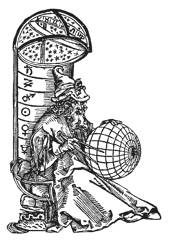
Historical Astronomy Division of the American Astronomical Society
HAD News #77, October 2010, edited by Joe Tenn.
Please send contributions for the next issue, comments, etc. to joe.tenn@sonoma.edu.
Photo credits: 1: N. Sivin; 2: Springer; 3: J.S. Tenn; 4: J.J. O'Connor & E.F. Robertson, The MacTutor History of Mathematics archive; 5: J. Pasachoff; 6: J. Holbrook; 7: T. Hockey; 8: E. Tenn; 9: J. Holbrook; 10: James DeYoung, USNO; 11: Adler Planetarium, Chicago, IL; 12: Ohio University; 13: Univ. of Notre Dame; 14: D. Herald, IOTA; 15: Library of Congress; 16: Pickering, E.C., A. Searle, & W. Upton, Ann. Harvard College Obs. 11, 7 (1879). Reprinted in Milone, E.F. & J.W. Pel, “The High Road to Astronomical Photometric Precision: Differential Photometry,” in Milone, E.F. & C. Sterken, eds., Astronomical Photometry: Past, Present, and Future (NY: Springer, 2011), pp. 33-68.
